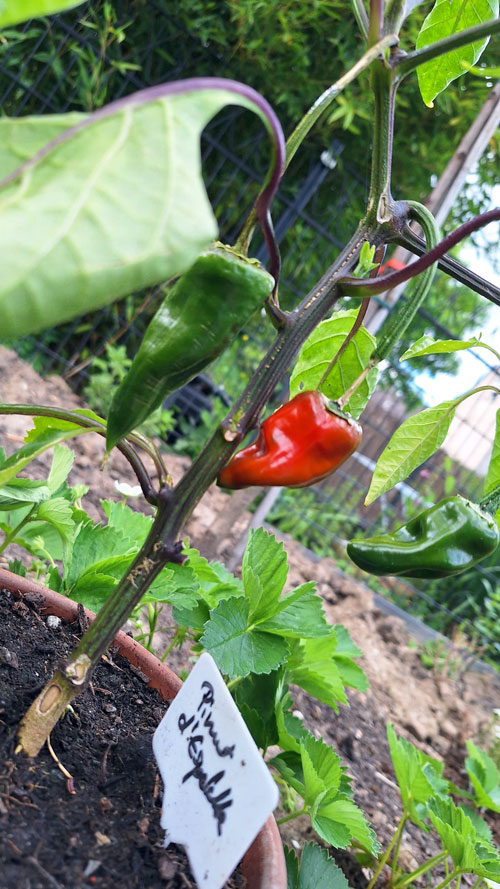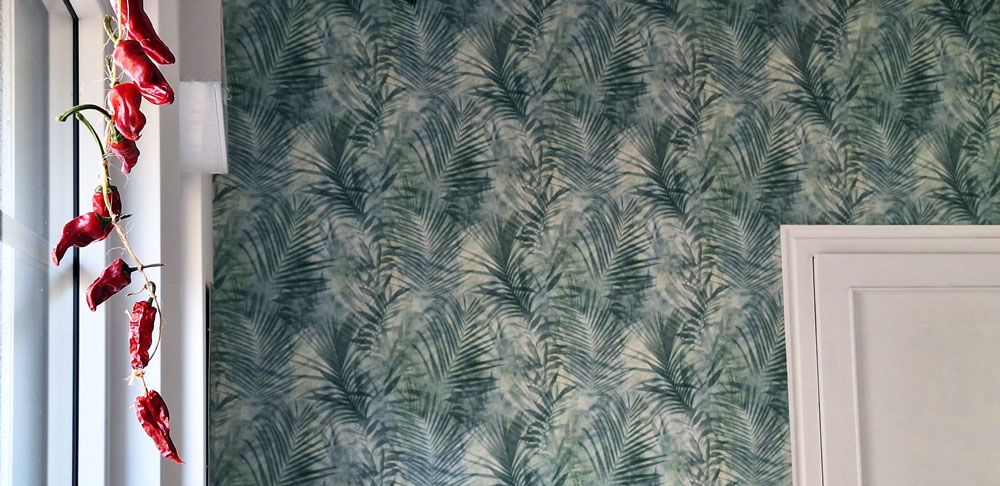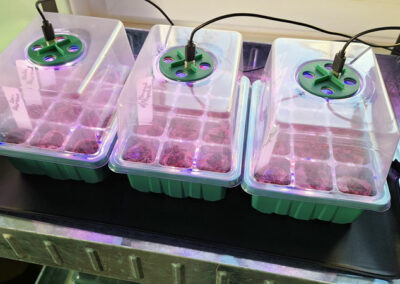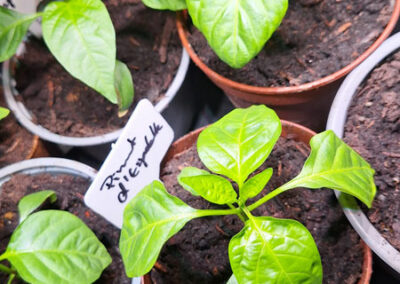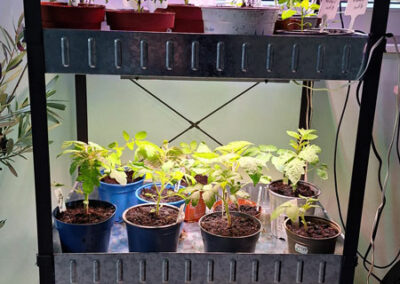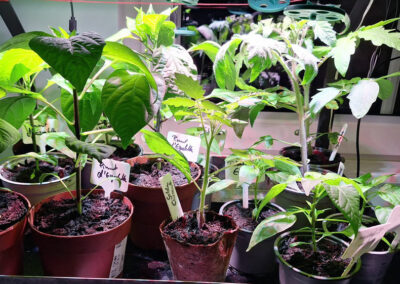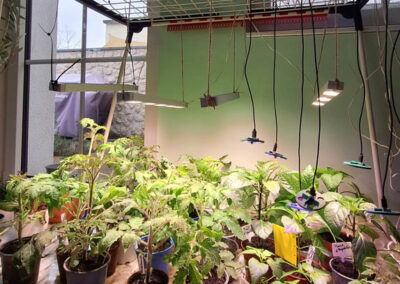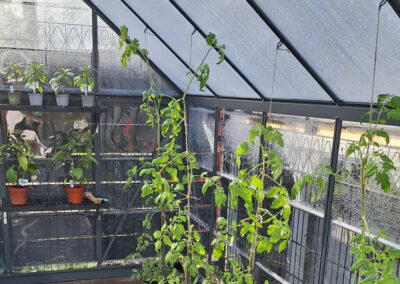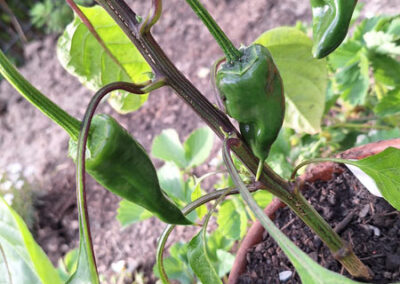Which chili variety is behind Piment d’Espelette?
Without much research effort, we quickly found out that Piment d’Espelette is the variety Capsicum annuum var. Gorria. On Amazon, we quickly found the seeds and ordered them. Additionally, we got a heating mat to increase the temperature of the germination containers and help the chili seeds germinate, as well as small seedling pots with LED lighting. This might not be strictly necessary, but we wanted to start sowing in January, as is sometimes needed for other chili varieties. Especially with slow-ripening varieties, there’s a risk that the little fiery delicacies might not fully ripen.
The Gorria chili plants grow and thrive
Our attempts turned out very positive. Out of 6 seeds, 5 germinated and grew into strong young plants over the following days and weeks. When the plants became too large, we had to get creative. First, we brought out the old IKEA Växer shelf from the basement. When even this didn’t provide enough space between the plants and the LED lights, we repurposed an old drying rack. This allowed us to adjust the height of the LEDs and the distance to the plants as needed. By March, the Gorria chili plants were already bearing their first flowers and shortly after, their first fruits.
Around the same time, we also built our greenhouse in the garden, so the plants moved there – actually much too early – in April. Only on particularly cold nights did we bring the pots back inside. Since May, the plants have been fully outside, with some in our raised bed and three in terracotta pots in other locations.
The first Piment-de-Kempen peppers are ripening
And behold: Since May, we have been harvesting occasional Piment-de-Kempen chili peppers. In June, we started drying the peppers on a string in the kitchen. Especially with the Piment peppers that ripened in May, we are already seeing small successes. We will continue harvesting and adding the new chili peppers to dry alongside the others. We will report further in the fall. Then, we plan to grind the dried Gorria chili peppers into fine powder. Years ago, we tried to make chili powder from another variety and ultimately failed due to insufficient drying. This time, we will be more cautious.
Will we be able to grow, harvest, and process Piment d’Espelette successfully? Keep your fingers crossed for us. If all goes well, we will test whether our Piment de Kempen can at least somewhat match the taste of its noble brother from the Basque Country.
